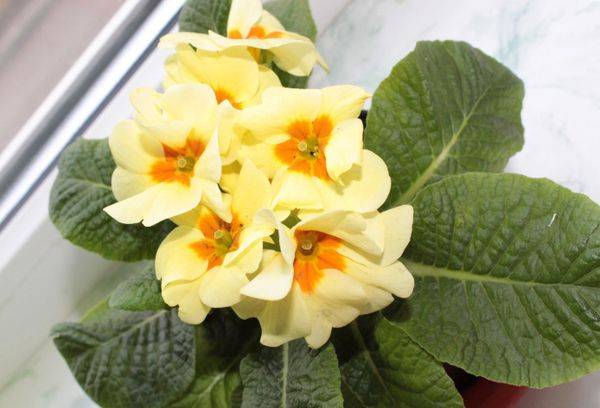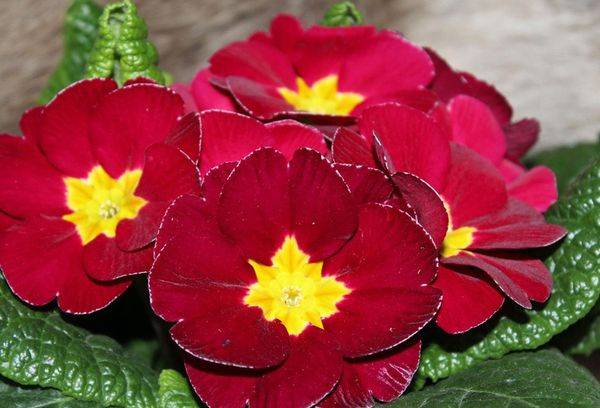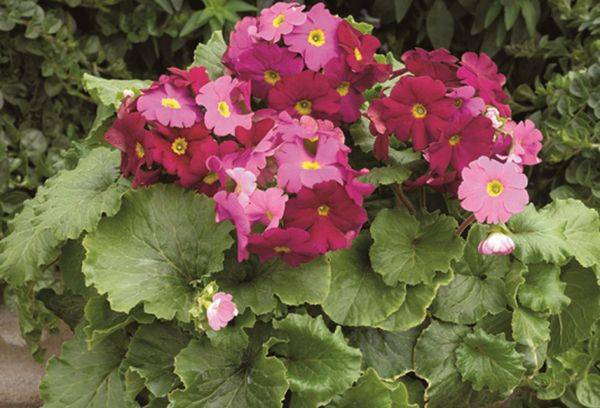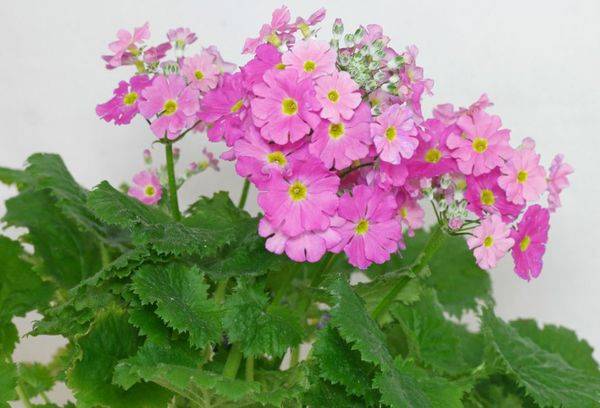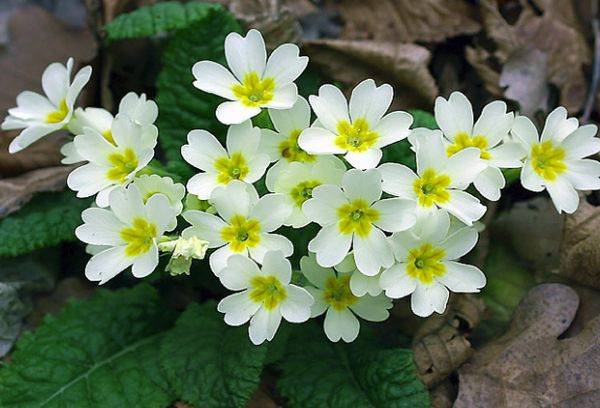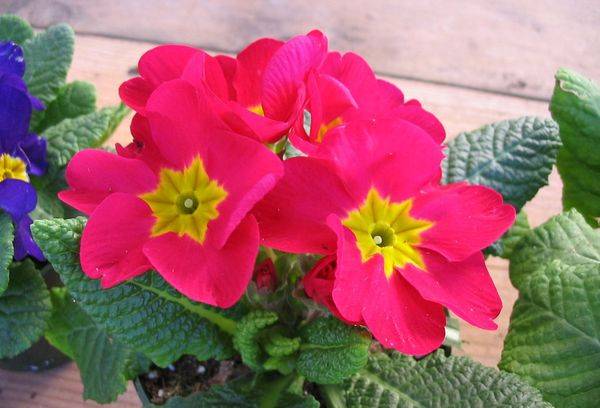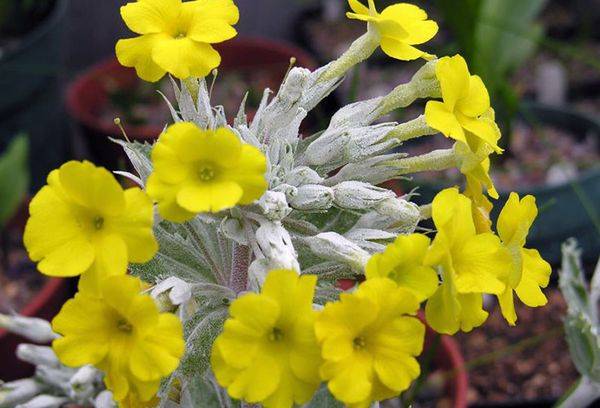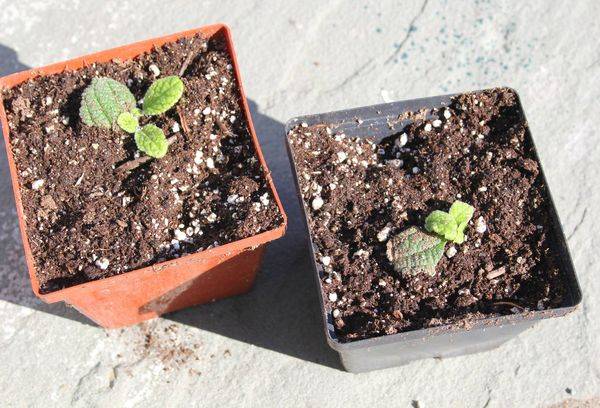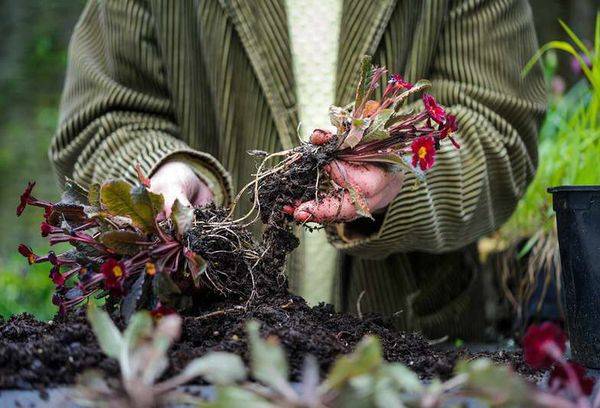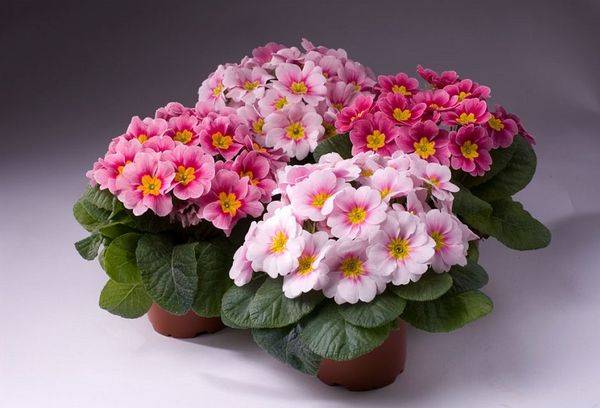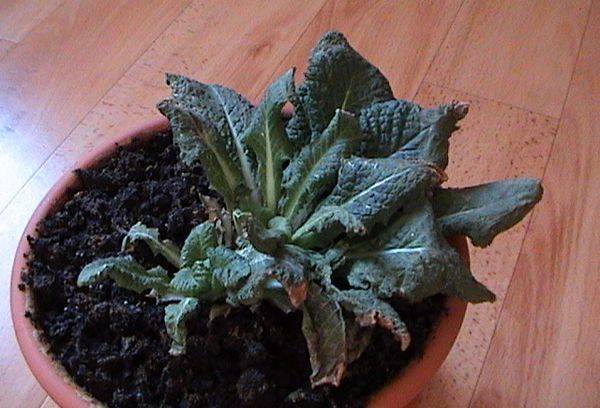How to grow primrose primrose indoors
A very beautiful and at the same time unpretentious flower - indoor primrose - is deservedly popular among gardeners. Otherwise it is called common primrose. Under natural conditions it grows in the Crimea, the Carpathians, Transcaucasia, western Europe and northern Africa.
Description
The genus primrose belongs to the primrose family. The height of the plant usually varies from five to twenty centimeters, the roots are fibrous. The leaves are on average seven centimeters in diameter, rosette-shaped, oblong-oval or lanceolate, with denticles along the edges, pubescent and wrinkled.

Primulas are annual and perennial. An annual flower, such as obconica or Chinese primrose, is best suited for growing at home.
Kinds
Only a few species and varieties are grown indoors:
- Primrose vulgaris (stemless) It is distinguished by large flowers, from 2.5 to 4 cm in diameter, of various shades: blue, red, yellow, white. The flowers are collected in the central part of the rosette on thin stalks up to 7 cm long.
- Primrose variable often has inflorescences of two shades, which are located on a peduncle up to 30 cm high.
- Primrose obverse conical very often causes allergic reactions in humans, but has an unusually attractive appearance.Flowering - from December to May, in rare cases - until July, the buds have different colors and are collected in umbrellas on pedicels up to 30 cm long. They smell pleasant, the size varies from 2.5 to 4 cm. The plant is perennial, up to 20 cm high.
- Primrose softish (soft) has small, up to one and a half centimeters, fragrant flowers; they are arranged in large numbers in tiers on a long 45-centimeter thin peduncle. The colors of the flowers are very diverse: orange, red, pink, white, purple.
- Primula cue It has light green leaves with a white coating, making them look slightly powdery. The flowers are small, about 1.3 cm, yellow, with a slight aroma, collected 6-10 pieces in a brush located on a peduncle about 30 cm long.
- Chinese primrose It is distinguished by large flowers that can be red, white, pink, orange, purple and are arranged in clusters.
Home care
Despite the fact that primrose is undemanding to growing conditions, certain rules will still have to be followed during the growing process.
Illumination. Windows facing west, east or north are ideal for placing a pot of primrose. There should be no drafts. A bright room will be optimal for growing, but direct sunlight on the plant must be avoided.
Temperature regime. The optimal range for primroses is from +16 to +20˚ C. Even if the thermometer in the room does not rise above +16˚ C, abundant flowering can still be achieved.
When the primrose blooms, it is advisable to lower the ambient temperature to +12-14˚ C.In the spring months and autumn, the best temperature regime will be from +18 to +20˚ C, in winter - from +16˚ C to +18˚ C. A suitable indoor air temperature ensures long-lasting and abundant flowering.
Watering. Primrose should be watered moderately, allowing the surface of the substrate to dry. The earthen clod should not be allowed to dry out, but overwatering the plant is also contraindicated - the root system will rot.
Advice
Never pour water directly onto the leaves. If you neglect this rule, the leaves will begin to rot.
Humidity. Indoor primrose easily tolerates high and low air humidity. You cannot spray the plant, as this will lead to rotting of the leaves.
Priming. To avoid stagnation of moisture, you should put a layer of drainage on the bottom of the pot, otherwise the roots will rot. The easiest way to buy a substrate at a flower shop is already prepared and intended for plants of the primrose family. To make your own potting mix, use equal amounts of peat moss, leaf soil and sand.
Feeding. To maintain and stimulate the development of primrose, weak solutions of mineral fertilizers containing microelements should be used. Feeding is done once every two weeks. During the dormant period, the flower does not need them.
Advice
If you apply fertilizer before flowering, only leaves will grow, so feed the primrose when it has already bloomed.
Periodically remove dried leaves, stems and flowers from the plant.
Reproduction
Primrose is planted by dividing the bush and seeds. In the second method, planting is done in specially prepared soil, in shallow but wide containers. After sowing, they must be covered with glass or film.To ensure seed germination, you need to create a favorable temperature regime: from +16 to +17˚ C. If planting is done correctly, the first shoots will appear in 14 days. When they have 1-2 leaves, the plants need to be transplanted into pots.
The optimal time for propagation of primrose by division is 3-5 years of life. By this age the flower is growing well. Dig up the plant and divide it into several parts. In this case, you need to pay attention to the renewal bud - it should be on every part. Sprinkle the cut areas with ash and quickly plant them in the soil mixture. In the first month, seedlings need abundant watering. The best period to start growing primrose is autumn and spring.
Plants that have reached two years of age are ideal for forcing. Acceleration of development consists of two stages:
- At the end of autumn, remove the flower from the container along with the earthen lump and place it in a cool room where the thermometer will not rise above +3˚ C. Leave the primrose like this until February.
- In February, clean the flower from damaged and old parts (remove bad stems and leaves) and plant it in a pot. The socket should be located at ground level. Place the container in a well-lit, cool room. Water the primrose moderately, and after the buds appear, feed it. The application of a weak solution of mineral fertilizers during this period will enhance flowering.
Advice
The magazine purity-en.htgetrid.com recommends for forcing to provide a temperature of +5 to +10˚ C. If it is warmer, the leaves will grow very quickly to the detriment of budding.
If you start forcing in February, primrose will give flowers and with them a festive mood just in time for March 8th.
Transfer
The optimal time for relocating primrose is once every four years. It is convenient to propagate the flower at the same time as replanting. The best time for the procedure is the end of September.
Primrose should be replanted after purchase. This is explained by the fact that caring for plants in the place where they were purchased differs from that at home. You should not replant the flower right away: the plant must adapt to new conditions. Otherwise, the stress associated with the transplant will be superimposed on the weakness caused by the change of environment, and the green pet may die.
Often, gardeners begin to replant a plant if they are not satisfied with its appearance or, for example, bought a new, beautiful pot. The approach to flower care activities should be reasonable:
- analyze whether the season for transplantation is acceptable;
- Is the appearance of the plant really so unattractive?
Relocation is objectively necessary:
- if the plant begins to look bad after being at home for some time;
- pests, disease symptoms or deviations in plant development are noticed.
It is especially necessary to transplant primrose, which grew in distant lands and is considered imported.
The optimal container for relocation would be a clay pot with holes in the bottom to allow the plant to breathe, not too large and not too small. You can buy the soil mixture at a flower shop or make it yourself. The best soil would be leaf and turf soil taken in equal proportions, as well as sand cleared of impurities, thanks to which the substrate will be airy, loose and light.
Place a drainage layer at the bottom of the container and add dry or wet sphagnum moss. Sprinkle soil mixture onto the drainage.
Advice
Do not make the moisture-wicking layer too thick or choose a tall pot. The root system of the primrose should not come into contact with the drainage.
The roots of the plant are very fragile and delicate, so you should transfer it from one container to another with the utmost care. There is no need to untangle the roots, which have mixed with the soil and become tangled to form a lump of earth; transplant the flower into a new pot along with it and dig it in on the sides.
After transplantation, it is necessary to care for the primrose especially carefully. Provide regular watering, remove old buds after flowering - the plant should not waste vital energy on outdated parts. In this case, it will bloom for a longer time.
Advice
Between transplants, update the soil around the plant.
Planting and caring for primrose is quite possible even for an inexperienced gardener; it does not require special skills or experience. However, the flower does not like neglect.
Pests and diseases
The most common disease of primroses is rot of the stems and root system; the following are also common:
- anthracnose;
- powdery mildew;
- spotting;
- rust;
- jaundice;
- cucumber mosaic.
The most dangerous for primrose is spotting caused by the fungus Ramularia cercosporella. As a rule, the plant is affected in May, the first symptom is pale round spots appearing on the leaves. Over time, the spots acquire a brownish-brown tint with yellowish streaks or become gray. In July, the spots become covered with a white or gray coating, and the affected leaves dry out. Primrose does not bloom and often dies.
Fungicides will help get rid of the scourge.Remove and destroy leaves with spots, then treat the flower with Topsin or Fundazol in accordance with the instructions for use of the drug.
Among the pests that settle on primrose are leaf and root-knot nematodes, weevils, aphids, and spider mites. In case of severe pest damage, treat the flower with Akarin, Fitoferm or Fufanon in accordance with the instructions for use of the product.
Beneficial features
Primrose is not only a beautiful flower, but also has beneficial qualities. The plant has an expectorant, diuretic and diaphoretic effect, strengthens the body. Helps normalize the secretion of gastric juice, improves the functioning of the adrenal glands. Since ancient times, the aerial part of primrose, which is rich in saponins and phenolic glycosides, has been used in folk medicine. The roots contain glycosides and essential oil, carotene.
Primrose oil restores immunity and is effective in treating painful menstruation and unpleasant symptoms of menopause in women. The drug is used in the treatment of hormonal disorders in men and women, as it helps to increase hormone levels. The oil is used for rehabilitation after infectious diseases and intoxications. Helps fight high blood pressure, angina, and cardiovascular diseases.
Adding primrose to salads is useful, as it contains large quantities of ascorbic acid. The dried plant is used for acute respiratory infections, flu, bronchitis, hay fever, sore throat, and rhinosinusitis. The green mass acts as a mild hypnotic and sedative and is effective in the treatment of migraines and neuroses.
There are contraindications to the use of primrose: pregnancy, mental illness (schizophrenia), individual intolerance (the plant often causes allergic reactions). Before using primrose for medicinal or prophylactic purposes, you should consult with your attending physician.
